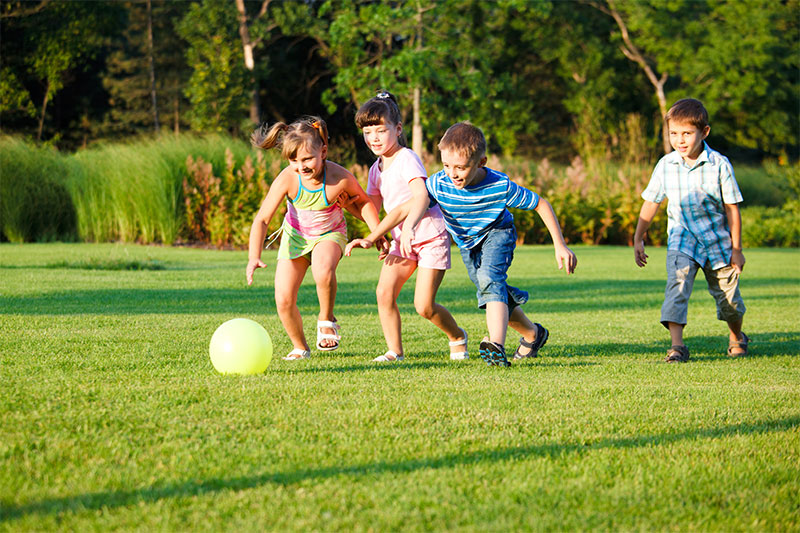Why Preschool Matters
A preschool education may have more of an impact on your child’s educational and social future than you may realize! A variety of preschool activities allows them to practice social and motor skill activities that they may not have picked up on or been exposed to at home. See why Parents suggests sending your child to a high-quality preschool to give him an advantage when he attends kindergarten the next year!
Childhood experts agree: Attending a high-quality program prepares kids for kindergarten and beyond. But finding the best option for your child takes time and research. To get you started, we’ve answered your biggest questions.
Why Preschool Matters
1. What’s the difference between childcare and preschool?
Childcare centers are generally an option for working parents who need their children to be taken care of during the day; centers accept babies as well as toddlers and are full-time, full-year programs. Preschool refers to an early-childhood educational class for 3- and 4-year-olds. Many offer a part-time schedule (for example, a few hours a day, two to five times a week) as well as full-day care, but only from September to May. Yet the terms are often used interchangeably. A childcare center with experienced, well-trained teachers and stimulating activities offers kids similar advantages to a preschool. “In fact, many preschools are part of childcare programs,” says Linda Smith, executive director of the National Association of Child Care Resource & Referral Agencies. (To learn more about high-quality childcare — as well as preschool programs — log on to naccrra.org and download a free copy of Is This the Right Place for My Child?)
2. How important is preschool?
“There’s increasing evidence that children gain a lot from going to preschool,” says Parents advisor Kathleen McCartney, PhD, dean of Harvard Graduate School of Education, in Cambridge, Massachusetts. “At preschool, they become exposed to numbers, letters, and shapes. And, more important, they learn how to socialize — get along with other children, share, contribute to circle time.”
Statistics show that a majority of kids attend at least one year of preschool: According to the National Institute for Early Education Research (NIEER), more than two-thirds of 4-year-olds and more than 40 percent of 3-year-olds were enrolled in a preschool in 2005. “Children who attend high-quality preschool enter kindergarten with better pre-reading skills, richer vocabularies, and stronger basic math skills than those who do not,” says NIEER director W. Steven Barnett, PhD.
“Every child should have some sort of group experience before he starts kindergarten,” says Amy Flynn, director of New York City’s Bank Street Family Center. Music and gymnastics classes are great, but what preschools do that less formal classes don’t is teach kids how to be students. Your child will learn how to raise her hand, take turns, and share the teacher’s attention. What’s more, she’ll learn how to separate from Mommy, who often stays in a music or gym class. All of this makes for an easier transition to kindergarten. “Kindergarten teachers will tell you that the students who are ready to learn are those who come into school with good social and behavior-management skills,” Smith says.
In fact, educators have so recognized the importance of giving kids some form of quality early education that about 40 states now offer state-funded pre-K programs.
3. What will my child learn?
In addition to strengthening socialization skills — how to compromise, be respectful of others, and problem-solve — preschool provides a place where your child can gain a sense of self, explore, play with her peers, and build confidence. “Kids in preschool discover that they are capable and can do things for themselves — from small tasks like pouring their own juice and helping set snack tables to tackling bigger issues like making decisions about how to spend their free time,” says Angela Capone, PhD, senior program manager at Southwest Human Development’s Arizona Institute for Childhood Development, in Phoenix. “Plus, 4- and 5-year-olds have begun asking some wonderful questions about the world around them — what happens to the water after the rain? Do birds play? Quality preschools help children find answers through exploration, experimentation, and conversation.”
4. But what about learning his ABCs?
“Young children can certainly learn letters and numbers, but to sit kids down and ‘teach’ them is the wrong way to do it,” says Smith. “They learn best through doing the kinds of activities they find interesting — storytime, talking to their teachers about stars, playing with blocks.” To help kids learn language and strengthen pre-reading skills, for instance, teachers might play rhyming games and let kids tell stories. Keep in mind that for small children, school is all about having fun and acquiring social skills — not achieving academic milestones. “Kids need to be imaginative and to socialize — that’s what fosters creative, well-rounded people. It’s not whether they can read by age 4 or multiply by 5,” says Flynn. An ideal curriculum? Parading around in dress-up clothes, building forts, and being read to.
Choosing the Right Preschool
5. How old should my child be when she starts?
Most preschools serve 3-, 4-, and 5-year-olds, and many kids begin at age 4. (Some preschools will start accepting children at around 2 1/2, but that doesn’t mean your child will be ready when he reaches that age.) You can choose from a part-time schedule or a full-time one. Your choice will depend on your family’s situation — working moms might prefer five days a week — and on your child’s temperament.
Parents typically start investigating options about a year before they want their children to attend. But if you live in a big city, where competition for spots can be fierce, you’ll want to start applying even earlier and to more than one place.
6. How do I choose the right preschool?
Research, research, research. First, decide on location (close to work or home?) and hours (half-day, two or three days a week, full-time?). There are programs at private schools, daycare centers, religious institutions (like synagogues and churches), state-funded schools, and cooperatives run by parents. Start by asking for recommendations from other moms. Next, check whether the schools are state-licensed, which ensures the facility meets safety requirements and has adequate staffing (visit naccrra.org). Many states exempt religious-based preschools from all or some requirements — although many meet these standards anyway.
The gold standard of approval is accreditation by the National Association for the Education of Young Children. NAEYC carefully evaluates schools and childcare centers based on curriculum, teacher qualifications, class size, and health and safety standards; only about 8 percent of U.S. preschools are currently accredited. (Search for NAEYC-accredited preschools near you at rightchoiceforkids.org.) In addition, many preschools now have Web sites that you should visit.
Call each school you’re considering and ask about its fees, admission policy, and curriculum. Once you’ve narrowed down your choices, schedule visits. Most preschools run open houses during the winter. Also, meet with the director and spend time in a classroom to observe the teachers. Visit each school with your child and see how she responds to the classroom, the teachers, and the activities.
7. What should I look for during a visit?
Check out the basics: Is the facility clean and safe? Keep your eye out for smoke detectors and first-aid kits. Is there a well-kept outdoor play area? Are there plenty of art materials, age-appropriate toys, and books? Are they in good condition? Is the atmosphere friendly and fun? Student work should be displayed in the hallways and around the classroom, hung at kid-level. “I tell parents to pay special attention to the artwork on the walls,” says Dr. Barnett. “Would you be able to pick out your child’s artwork? If all the pictures look the same, then your child will learn to make a bunny just like everyone else’s. That’s not really the goal.”
The classroom should have a variety of activity areas — a reading place, an art station with materials on shelves that kids can reach, a block corner, a puzzle area, and a place for naps. Children should not all be doing the same thing at the same time; they should be playing with toys or other kids but still well supervised.
Finally, do you feel comfortable? “You want to be confident that once you drop off your child, he’ll be happy and well taken care of,” says Mark Ginsberg, PhD, NAEYC executive director.
Making the Right Decision
8. What makes a good teacher?
Find out about the teachers’ training and credentials. Ideally, head teachers should have a minimum of an associate’s degree and formal training in early-childhood education. “Research shows that teachers with college degrees and specialized early-childhood training have more positive interactions with children, provide richer language experiences, and are less detached,” says Dr. Barnett. Also, consider teacher-child ratios. According to NAEYC standards, there should be at least one teacher for every eight to ten 4- and 5-year-olds, and one adult for every six 2- and 3-year-olds. Low child-teacher ratios are very important, since they allow teachers to give ample attention to everyone, notes Dr. McCartney. Talk to the teachers about how they work with the kids. “Look for teachers who recognize the particular needs of different children, and who know how to adapt a curriculum for those who are ahead as well as for those who need additional help,” she says.
Visit a class while it’s going on. A good teacher talks with children, asking a lot of questions and patiently answering theirs. She makes kids feel welcome and fosters their self-confidence. Talk with the teacher about a typical day, and ways in which she’ll keep you informed about your child’s progress. If she’s responsive to your questions and you’re happy with her answers and her classroom style, you’ve found a good fit.
Visit Checklist
When you meet with the school’s director, ask about the following.
- Does my child need to be toilet-trained? Many preschools require that a child be out of diapers.
- How are parents involved in the school? A good sign is an active parent association that plans programs like family picnics, holiday parties, and parent socials. You might want to talk to other parents — the preschool should give you names.
- How will the teacher let me know about my child’s progress? Parents should be kept informed with newsletters, e-mails, and regular parent-teacher conferences.
- What do you do when two children are fighting? It’s crucial that you agree with the school’s discipline policy.
- What’s the daily routine? You want your child to have a sense of predictability each day — circle time, snack, reading.

